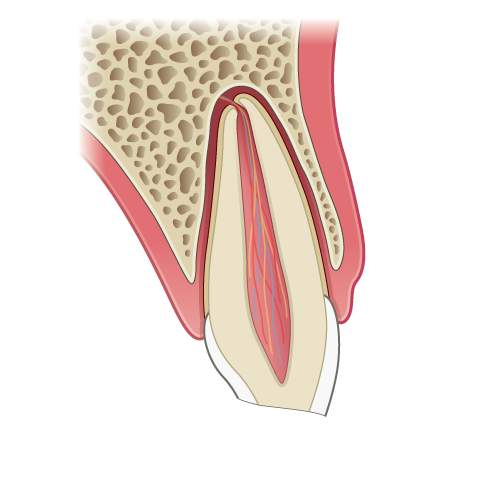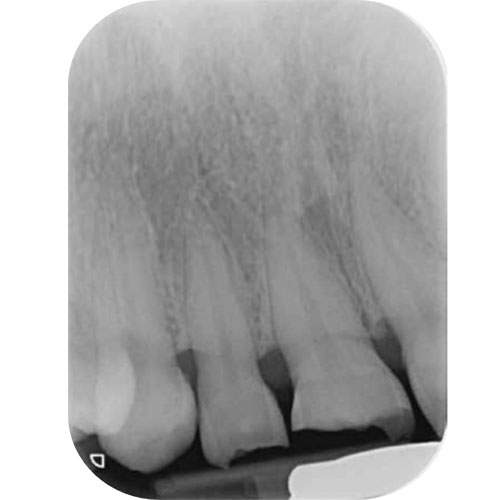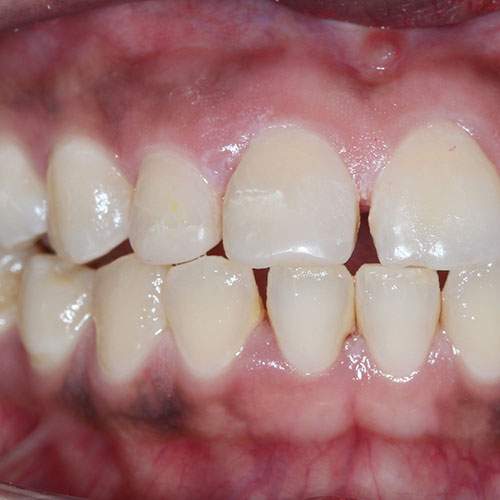Online Dental Trauma Guide: Part I Fracture Injuries
Enamel-dentine fractures
Enamel-dentine fractures
This is a fracture involving both enamel and dentine but with no visible pulpal exposure (also known as an uncomplicated crown fracture).
Clinical findings
A tooth with an enamel-dentine fracture is:
Usually sensitive to cold air (due to the exposure of the dentine)
Not mobile
Not tender to palpation.

Illustration: Longitudinal section of a tooth showing an enamel-dentine fracture.

Clinical image: Enamel fracture of the UR2 and enamel-dentine fracture of the UR1.

Radiograph: Showing enamel fracture of the UR2 and enamel-dentine fracture of the UR1.
Radiographic findings
The radiograph will show:
Loss of tooth tissue
Normal root and periodontal ligament.
If an associated luxation injury is suspected, multiple projection radiographs are advised.
If broken fragments have not been accounted for and a soft tissue laceration is present, it would be prudent to obtain soft tissue views.
Radiographic Tip
If fractured pieces are not found look for evidence of soft tissue laceration and consider the possibility that the missing fragments may be embedded within the soft tissues.
A radiograph taken at 30-50% of the normal exposure will demonstrate radio-opaque masses, if present (see section on enamel fractures for technique details).
Removal of the fragment is essential to prevent scarring.
If found it may be appropriate to refer the patient to an oral surgeon for management.
Management (primary and permanent teeth)
The tooth can be restored with direct composite resin if the fragment is not available.
If time is short covering the exposed dentine with glass ionomer will reduce the risk of bacterial contamination and make the tooth more comfortable for the patient until more definitive treatment can be undertaken.
If the tooth fragment is available every attempt should be made to re-attach the fragment.

Clinical image post treatment
Composite restorations for fractures of the UR1 and UR2.
Monitoring: Clinical and radiographic review and sensibility testing at 3, 6 and 12 months and then yearly review.




